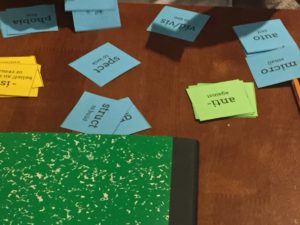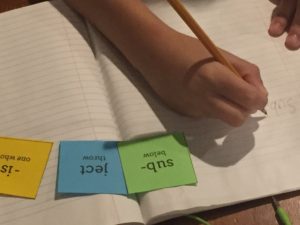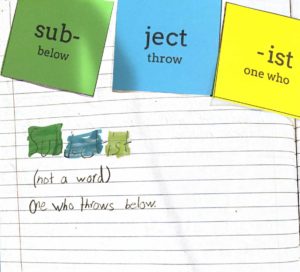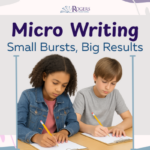** Contact us if you would like Rogers Education Consulting to come to your campus with engaging, evidence-based, and practical professional development **
 As an education consultant, the schools I work with a wide variety of schools, but one thing I hear all the time (no matter what type of school!) is that student vocabulary is an issue in every subject. I would wholeheartedly agree! Yes, there are the obvious solutions to the vocabulary issue: wider reading, increased dictionary skills, and more explicit instruction. But do we really have the time to teach every single word the kids are going to need to know? Doubtful.
As an education consultant, the schools I work with a wide variety of schools, but one thing I hear all the time (no matter what type of school!) is that student vocabulary is an issue in every subject. I would wholeheartedly agree! Yes, there are the obvious solutions to the vocabulary issue: wider reading, increased dictionary skills, and more explicit instruction. But do we really have the time to teach every single word the kids are going to need to know? Doubtful.
In truth, to improve vocabulary, students need to understand word parts. If the students understand different parts of words, they can then apply that knowledge to a wide range of words! A student who is reading a science book comes to the word hydrosphere. They might not know what the word means, but if they know that hydro means water and sphere means ball, they will be able to continue reading with confidence. On the other hand, the student who sees the word and does not know the meaning of the parts might decide to not read any further or miss the meaning of the sentence altogether.
Word parts are important, but how do we teach them? I am a firm believer in making sure students are reading, writing, speaking, AND listening to new words. If students only read the new word or only write them out, that word will not really be theirs. Also, based on Marzano’s research, I know that students need repetitive exposure to new words and they need time to make the word personal to them. They should create their own meanings, interact with the words out of context, and put the words in context. In my vocabulary session, I have lots of activities for teaching vocabulary, both in stations and whole group. Here is one of my favorite activities.
At the beginning of the year, the different parts of the words (root words, prefixes, and suffixes) are assigned a color that will be associated with them all year (for me: green for prefixes, blue for roots, and yellow for suffixes). I try to  pick colors like yellow, green, blue, and pink because those are the same colors typically found in packs of index cards and highlighters. Now students can make flash cards using the appropriate colored index cards and they can use the right color to highlight word parts in texts.
pick colors like yellow, green, blue, and pink because those are the same colors typically found in packs of index cards and highlighters. Now students can make flash cards using the appropriate colored index cards and they can use the right color to highlight word parts in texts.
I choose the root words I want the students to know and those are printed on blue paper. Root words are words on their own but can be joined with an affix (prefix or suffix) to change the meaning. Then I select the affixes we need to practice with and print out prefixes on green paper and suffixes on yellow paper. For this activity, this should not be the students’ first exposure to the word. You will want to have already taught these words at whatever level of depth you choose. In groups, students manipulate the word parts cards to create words. More than likely, they won’t create a “real word”, but that’s okay. The objective of the lesson is that students understand word parts and how they contribute to the meaning of a word. Once the group forms a word, they must write the word in their journal. Then they look it up in the dictionary (not under the prefix, but under the root) to see if it is a real word or not. If it is not a real word, they must define what their word would mean and use it in a sentence.
This is one of those activities that really help students learn AND they love doing it. If you want my starter list of affixes and roots, click the links below.
Please contact me if you would like my whole vocabulary session to come to your campus!


